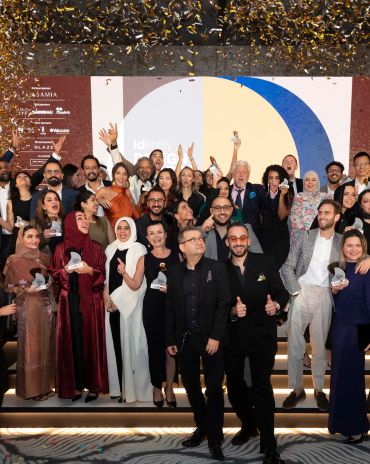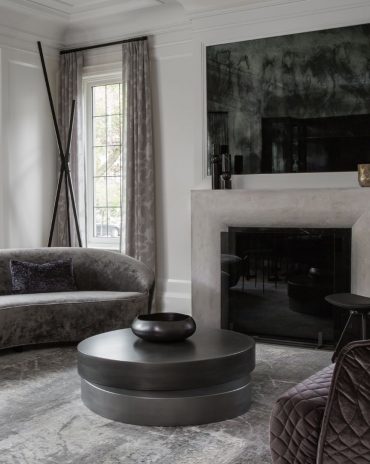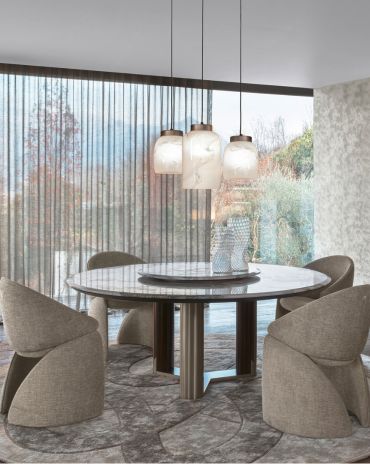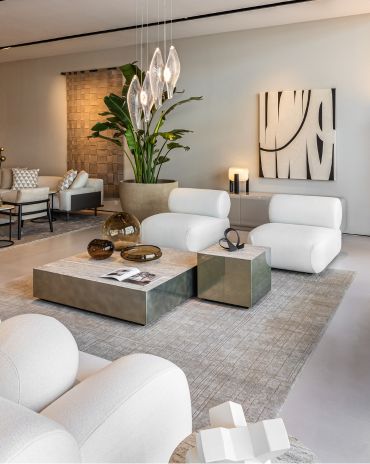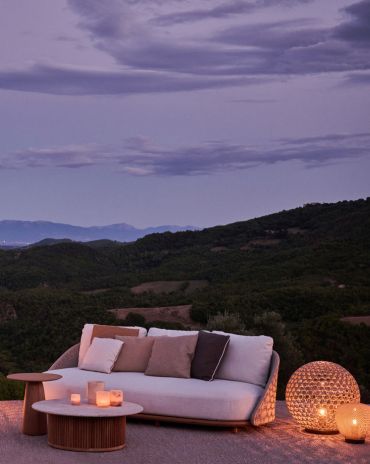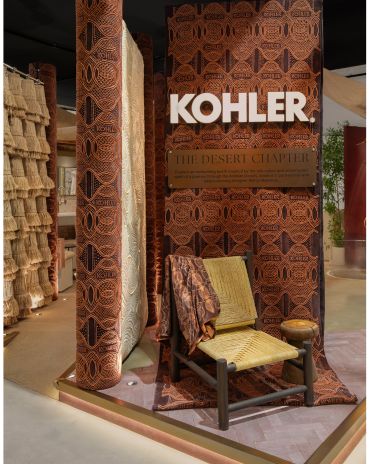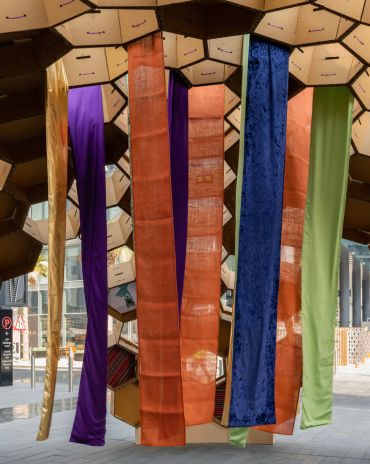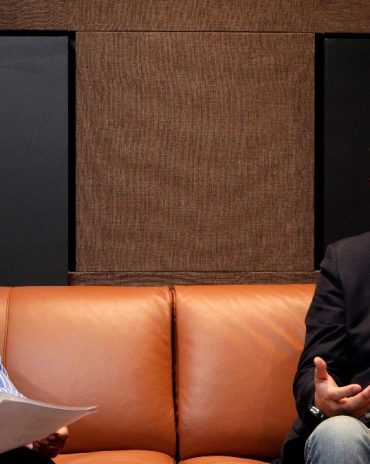Copyright © 2025 Motivate Media Group. All rights reserved.
Sëbou’s latest collection of handmade rugs is woven using Eton’s upcycled fabrics and inspired by flower fields in northern Morocco
Sustainability and craftsmanship is at the forefront of Sëbou's rugs
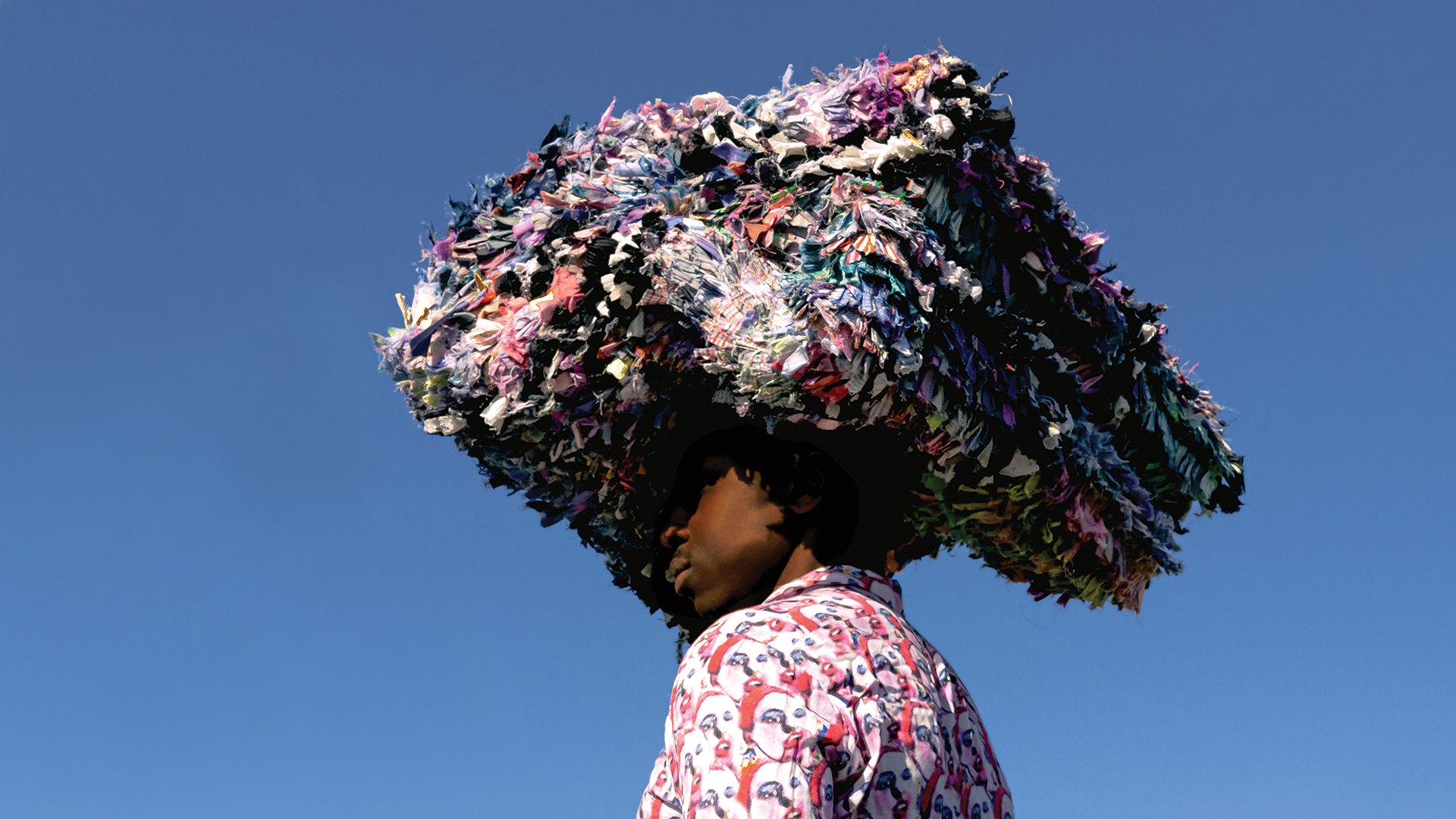
Since starting Sëbou in 2019, Omar Marhri has been adamant in ensuring that his rugs are created with sustainability in mind, using ecological wool made with zero waste, as well as cashmere. His second goal was to highlight the historic artisanship of Morocco’s Berber population, who have been expert craftspeople in the use of wool, iron, silver and clay for pottery. “I wanted to reimagine, reinvent and regenerate the artisanal craftsmanship of Moroccan rug-making,” shares Marhri, who is also the brand’s creative director.

With these values in mind, the Swedish brand’s latest limited-edition collection is woven in Morocco using upcycled by-products from fashion brand Eton’s shirt design process, using excess ‘blanket rolls’, each consisting of more than 100 colours and combinations. While these are usually later placed in storage – in Eton’s fabric archives – the collaboration with Sëbou has given them a new purpose. The idea came to Marhri through a conversation with a friend about fashion design’s ongoing waste problem, specifically leftover fabrics. They were on a plane going back from Morocco to Sweden, where Marhri lives.

“Being aware comes with responsibility, and we owe it to ourselves and the future to strive towards a more environmentally friendly lifestyle”, he adds. “[For] a design company, trends have an inherent challenge: they have their peaks, and eventually get replaced by the next trend. Our focus has always been to do the opposite: to make one-of-a-kind, timeless pieces made from materials that are recycled and upcycled and can live for a long time.” Leftover fabric is a common result of textile production, prompting Sëbou to purchase it in bulk from Morocco, Ghana and Sweden.

“After I came home to Stockholm from my trip, I contacted my good friend Sebastian Dollinger, who was at the time the creative director at Eton, which is one of Sweden’s oldest shirt brands, with an incredible history. I asked if they had any leftover fabrics that I could reuse to make beautiful rugs. He thought it was an incredible idea to give life to something that is just lying there, and he told me that they have a lot of leftover fabrics in their factories in Italy and Switzerland that we can use,” Marhri recounts.
Sëbou is an amalgamation of its founder’s home and heritage: weaving the subtlety of Scandinavian design with the vibrancy of Moroccan culture, rich in its craft heritage.
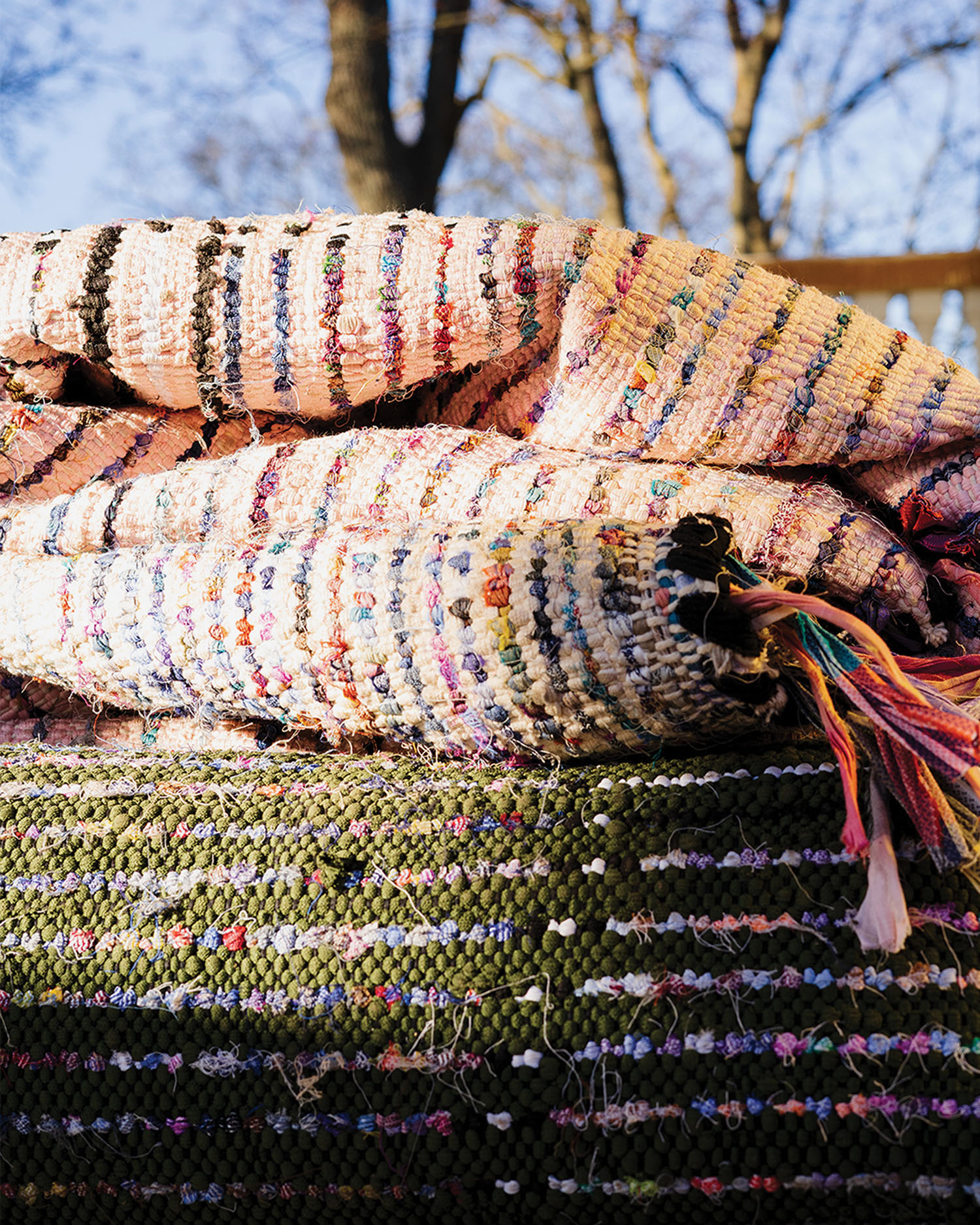
“For thousands of years, the Moroccan Amazigh have been knitting rugs in the same way, with the same historical designs and materials,” Marhri says. “My approach to designs is to try to challenge what has been, mixing old with new, Swedish minimalism and Moroccan craftsmanship, to make unique sustainable rugs.”
The limited-edition collection is also an ode to his childhood memories in Morocco, and inspired by the flower fields by the Sebou River – located in the north of the country. It was the first time he had seen the river in springtime as an adult, having spent summers there only as a child. “When I went down in the spring for the first time, I saw that the fields had bloomed. It brought me such peace and joy to observe, and I really wanted to share this through my art,” he says.
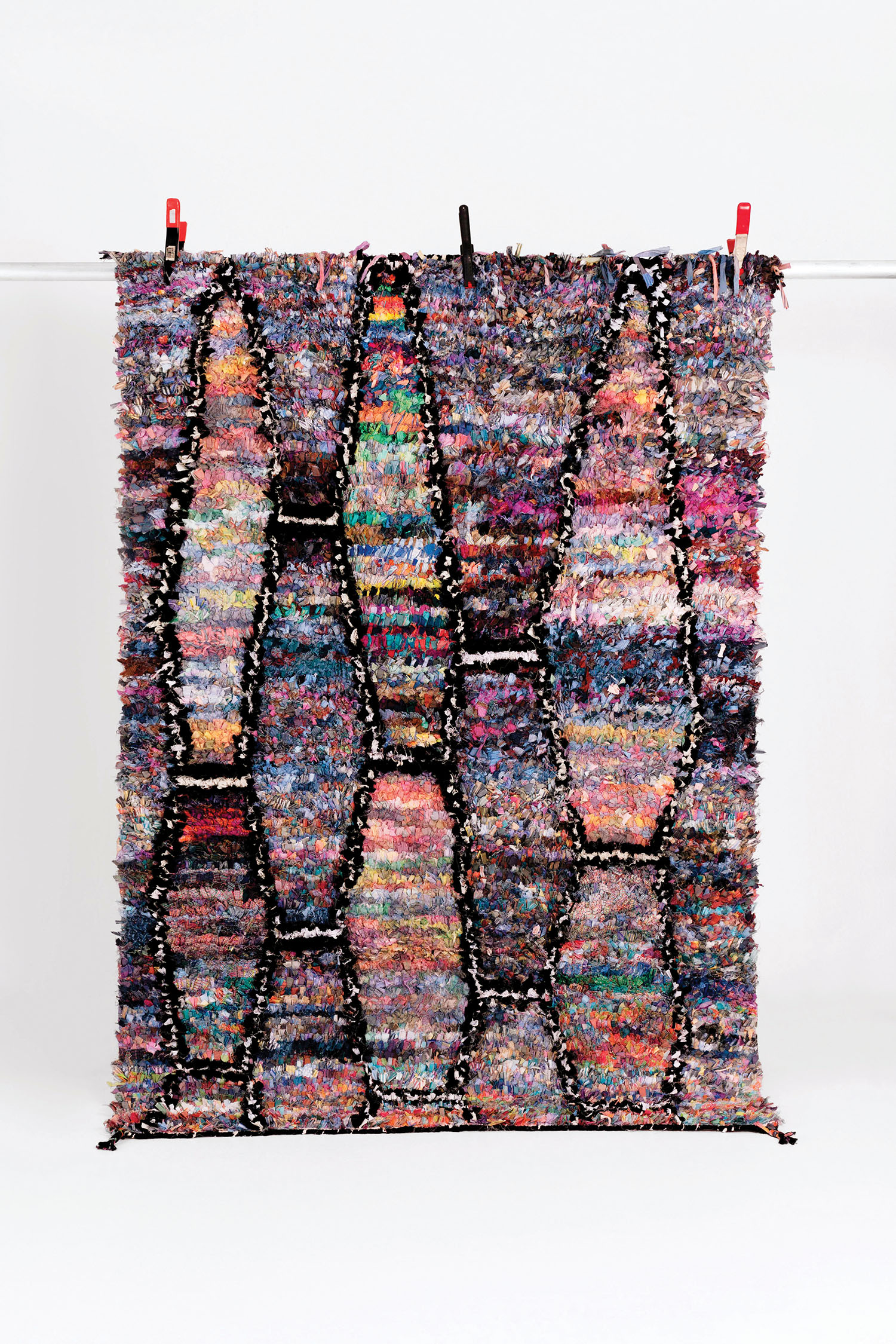
The collection’s vibrant colours have been knotted by hand – a discipline that takes a great deal of expertise and skill that has been passed on for generations.
“Craftsmanship is an art in danger of extinction. As everything becomes more efficiently produced and cheaper, people no longer value craftsmanship and quality as they once did,” Marhri says. “I am truly dedicated to keeping these traditions alive using new, innovative ways, so that craft can also appeal to the new generation.”
The Latest
In photos: Winners at the identity Design Awards 2025
Presenting the winners of 2025 identity Design Awards.
Identity Design Awards 2025 – Winner’s List
Here are the winners of the identity design awards 2025
Hogg’s Hollow
Set along the bend of a quiet river and sheltered within a mature, tree-lined enclave of Toronto, this riverside residence offers a dialogue between structure and softness, restraint and warmth
Salone del Mobile.Milano Paints Riyadh Red
The “Red in Progress” installation marks a powerful first step toward the city’s full-scale 2026 edition
An interview with Fabio Masolo on the Giorgio Collection
A conversation on passion, timeless design, and bringing Italian craftsmanship to the world
European Design, Instantly Within Reach
In a city where design dreams often come with long lead times, Caspaiou brings a refreshing difference – luxury, curated and available now
Shaping Tomorrow’s Interiors
Here’s what awaits at the OBEGI Home showcase at Dubai Design Week
Maison Margiela Residences
Conceived by Carlo Colombo, these bespoke residences will be located on the Palm Jumeirah
The Desert Chapter by Kohler and Marco Maximus
A fusion of design, culture, and the colours of nature
Downtown Design 2025 – The Highlights
A showcase of innovation, craftsmanship, and design excellence
In conversation with: Simon Wright of TGP International
identity interviews the Chairman and Founder of TGP International on the beginnings of the business and how the company shapes human experiences and memories in the hospitality industry.
We Design Beirut Edition Two: A Collective Revival
Uniting designers, artisans, and visionaries to reimagine Beirut’s future





